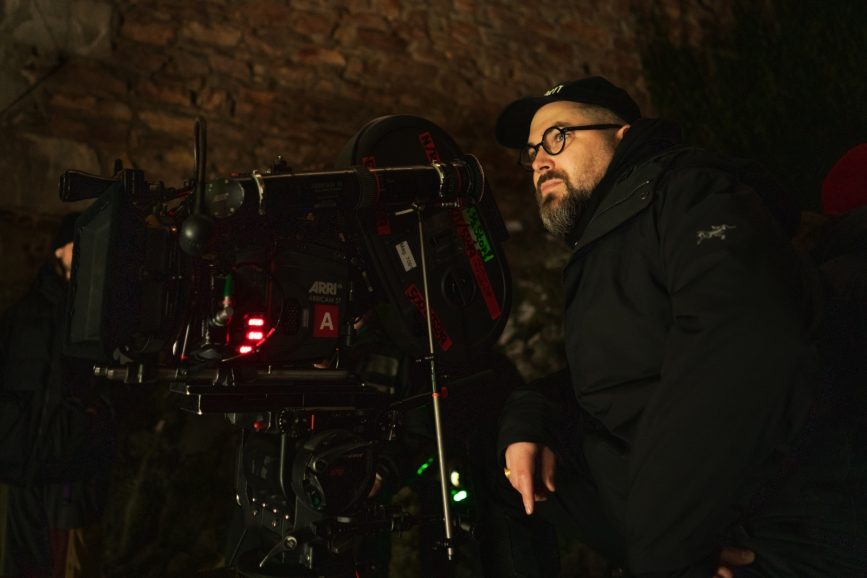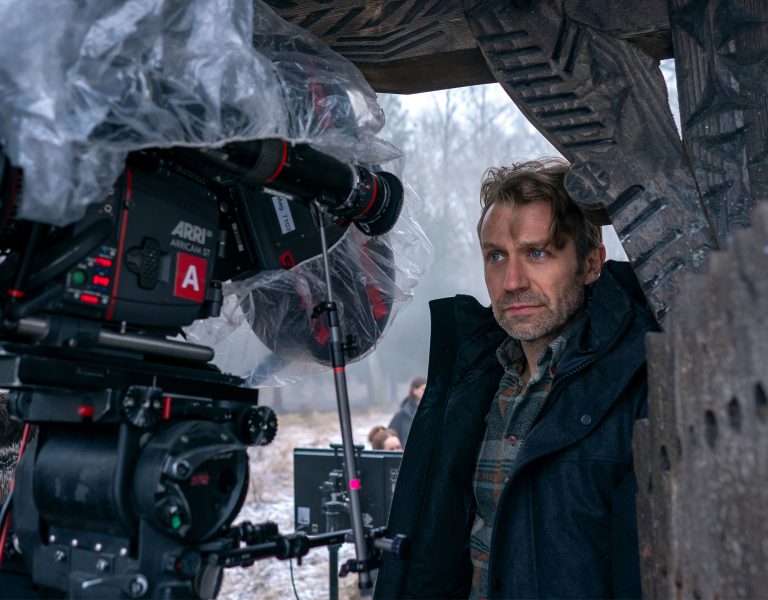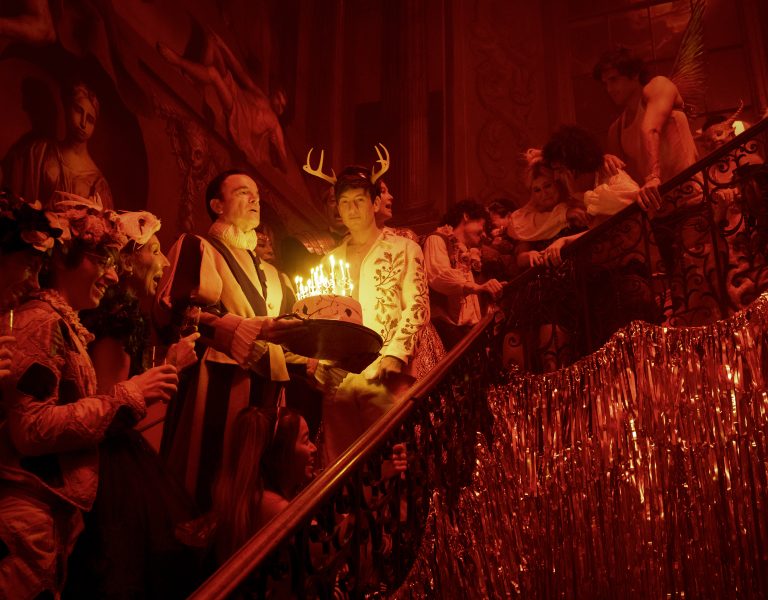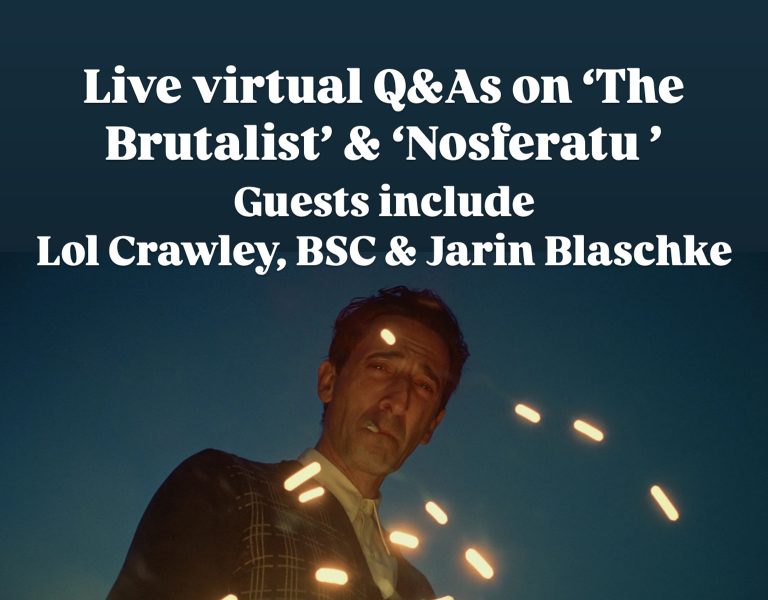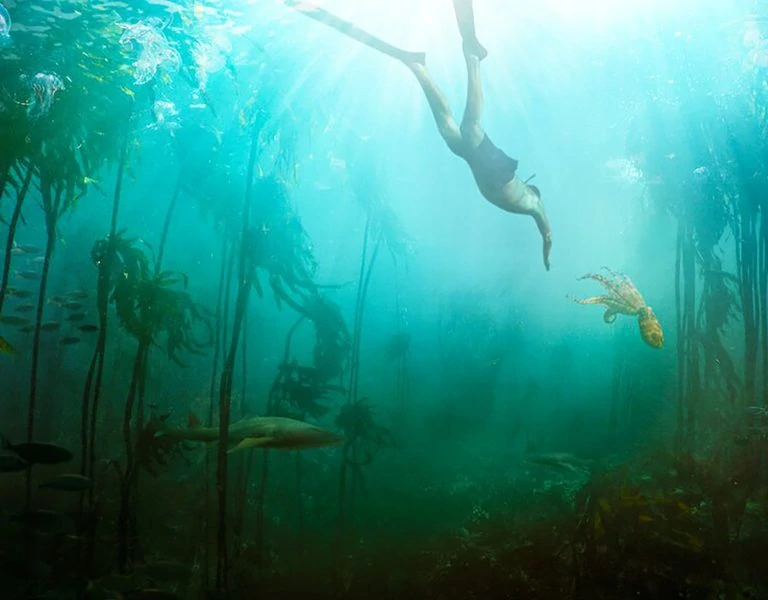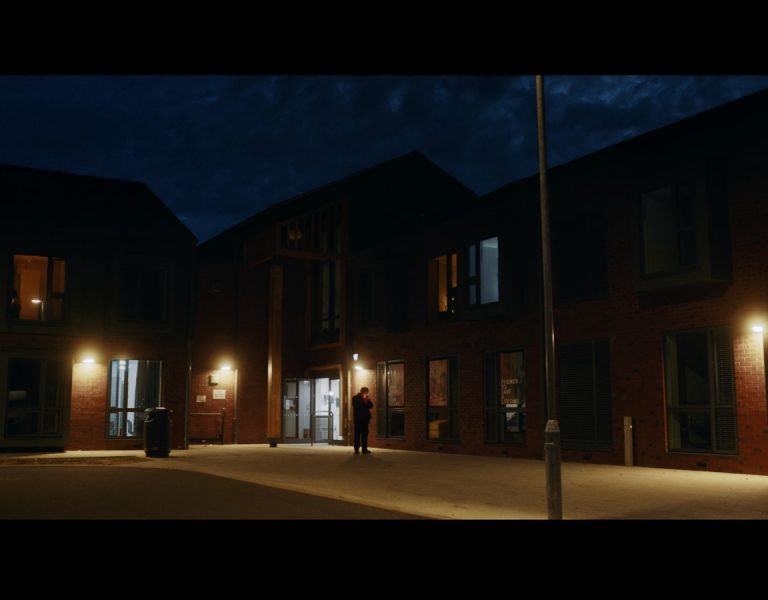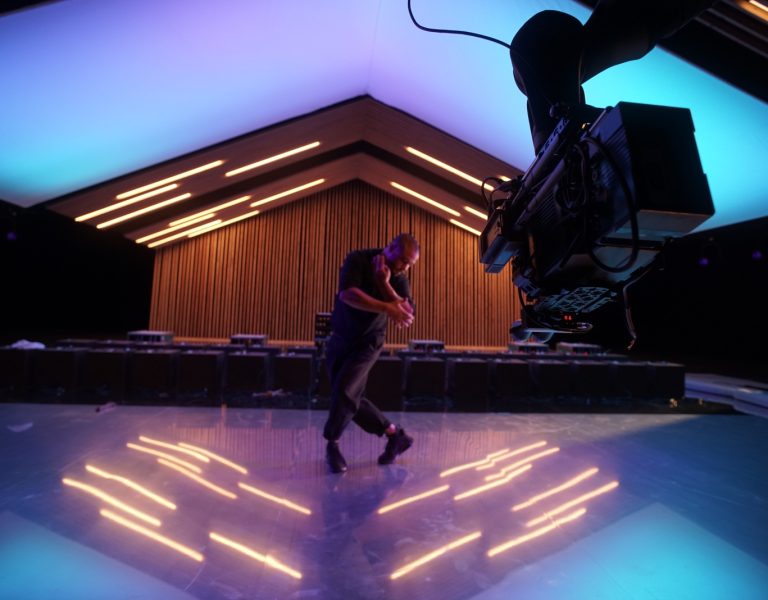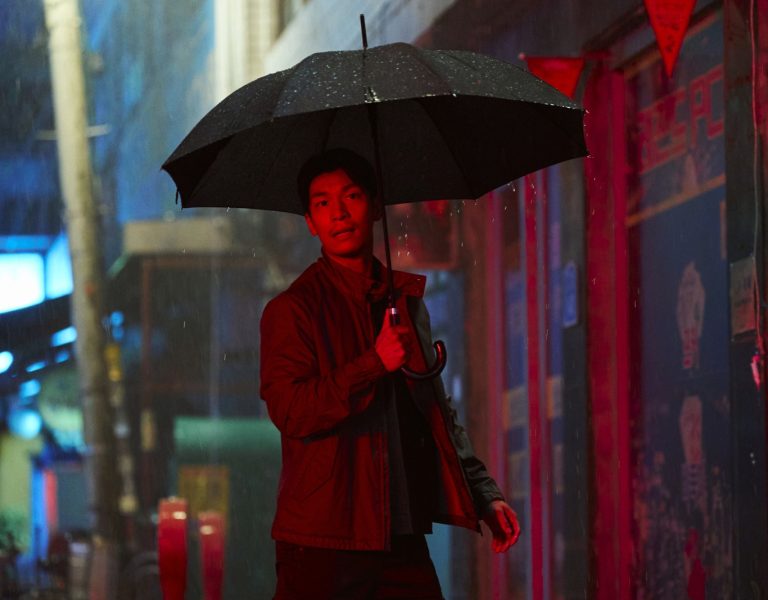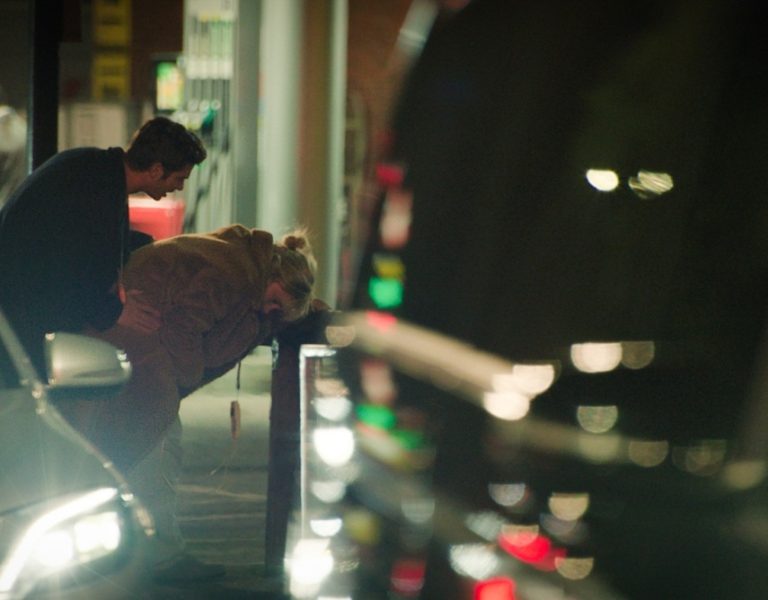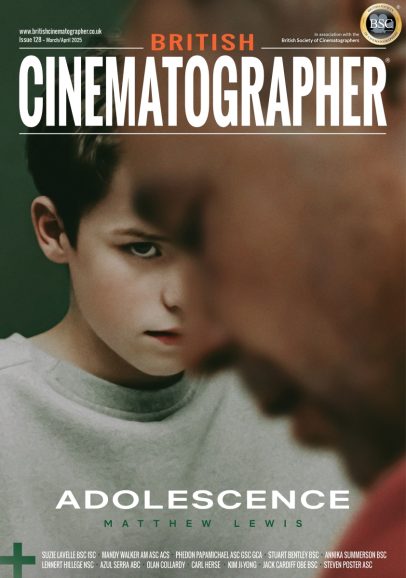FEAR IN THE FRAME
The creative union between Robert Eggers and Jarin Blashke continues to immerse audiences in darkness and visual splendour in their latest much anticipated production, Nosferatu.
The story of a vampire’s unquenchable bloodlust, Robert Eggers’ Nosferatu is a film that has been fermenting for years. Cinematographer Jarin Blaschke had just completed work on Eggers’ debut movie, 2015’s celebrated folk horror The Witch, when the writer-director began considering Nosferatu as his next project. In the end, two more films – The Lighthouse (2019), which saw Blaschke nominated for Academy and BAFTA awards, and Viking saga The Northman (2022) – intervened, while Nosferatu was delayed more than once.
Blaschke and fellow American Eggers never stopped “mulling over” Nosferatu, however, a film that now stars Bill Skarsgård as Count Orlok, the vampire who pursues Ellen (Lily-Rose Depp), the loved one of Thomas Hutter (Nicholas Hoult), the real estate broker who comes to Orlok’s Transylvanian castle on business. The result is nothing short of triumphant. Blaschke, who had toiled away for 15 years before The Witch, feels like he’s been working his way towards Nosferatu for his entire career. “This was, to me, a culmination of everything I’ve built on,” he says. “This movie is a big deal to me.”
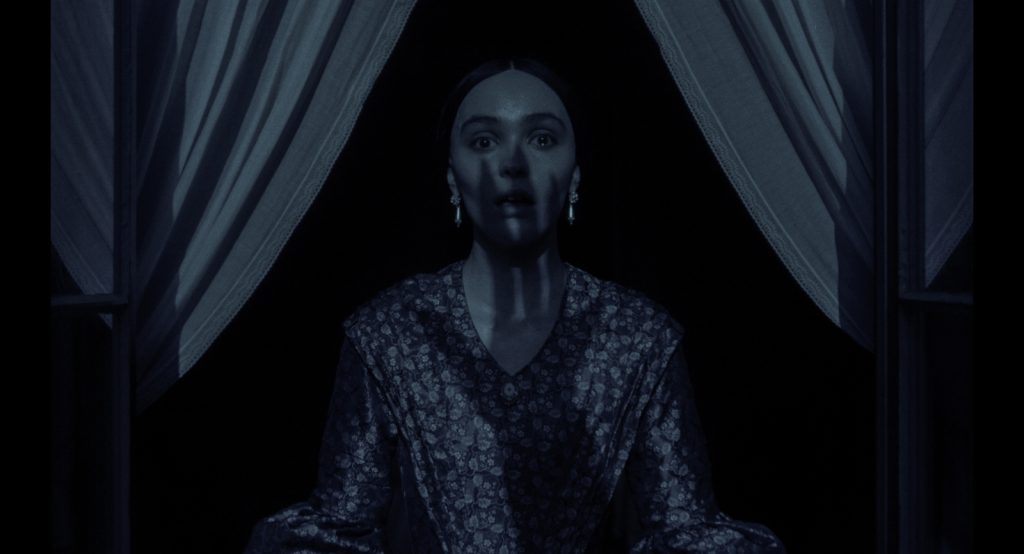
Allowing time for the aesthetic choices of the film to grow in their minds, Blaschke reports that Eggers’ methodology means that he will often come early with a look-book, even before the script has been written. “That’s not just for the benefit of his collaborators, but for himself. He needs the mood and he needs the vibe in order to really be inspired to write,” says the cinematographer, speaking over Zoom from a townhouse he recently moved into. Talking of inspirations, he swings his camera over to a wall. “My first photographic purchase over there. That’s a Brett Weston.”
The American photographer makes up part of Blaschke’s expertise in this particular art-form. For Nosferatu, “I was looking into early photography at first,” he explains, including the work of Henry Fox Talbot. This came rather than a re-examining of 1922’s Nosferatu, F.W. Murnau’s seminal silent horror that first introduced cinema-goers to Orlok, itself a loose adaptation of Bram Stoker’s 1897 novel Dracula. Although Blaschke has seen the Murnau version, he’s never fully watched Nosferatu the Vampyre, the 1979 film by Werner Herzog.
Over the years, Blaschke was instead inspired by Eggers’ reference points, notably the 18th Century German Romantic landscape painter Casper David Friedrich. “I was left to interpret that. What I could,” he says. “I think the specific Romantic painting that I probably attached to a little more is that of the American Hudson River School, but it’s the same idea. It’s an adjacent era. These art movements kind of travel around the world. So there’s an American version and a German version etc. Just that scope, lushness, and our insignificance when faced with the sublime.”
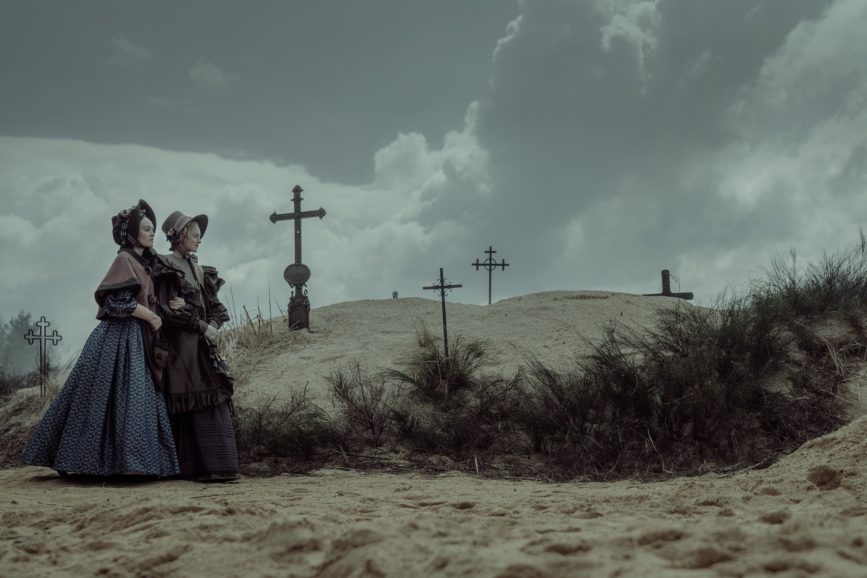
Palette perfection
Primarily shot on soundstages at Barandov Studios in Prague, Eggers’ Nosferatu began shooting in February 2023, with the production scheduled to last until May. Once again, Eggers and Blaschke veered towards shooting on Kodak 500T 35mm film stock. “It’s just the result; it just looks great. The palette is great,” says Blaschke. “For me, film is more about palette than it is about grain. Like Rob loves grain, he loves noise. I’m not against grain, but I’m not really attached to it either. For me, it’s just the soft palate, and just the depth and je ne sais quoi of the tones and the colours. Compared to the Alexa, film also tends to mute green, which for me is an extra bonus, depending on the stock and the way you scan it.”
Filming took place using the Panavision Panaflex Millenium XL2 camera. “We had lenses made of a few varieties, but among those lenses were some high speed lenses that [Panavision lens expert] Dan Sasaki made for us. I think they’re reverse telephoto design and they’re very, very fast. I think our fastest was our 35mm at T/ 1.1, a focal length we used for almost everything.” Rarely did Blaschke break out a second camera for the production. “Essentially it’s a single camera shoot.”
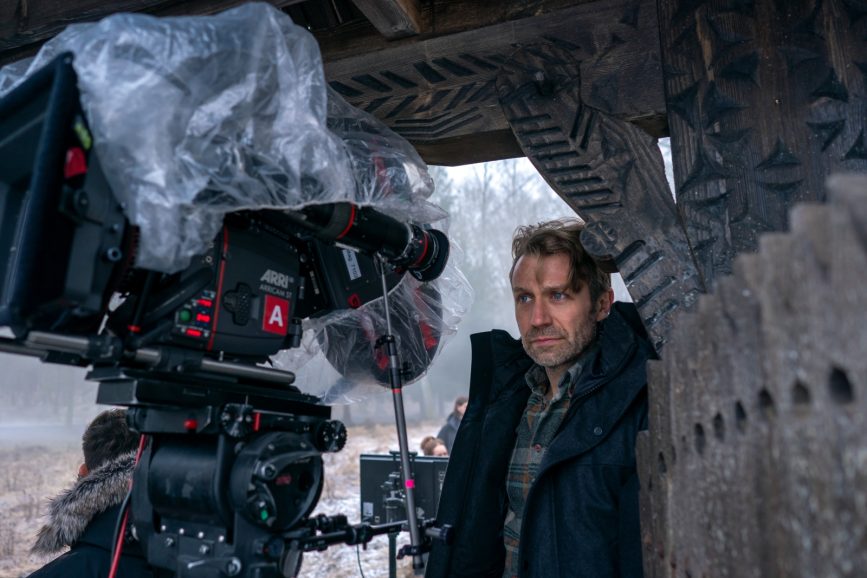
Working with Jan Cabalka, the production’s A Camera operator, Blaschke also pays tribute to his 1st AC, Ashley Bond. “I met him on The Northman. He’s like an old veteran, and his on-set demeanour is perfect. But most importantly, he can pull focus like no one else I’ve ever seen. In fact, his incredible skill almost encourages me to design more difficult shots, to just keep testing him. I’m a little spoiled. When it came down to high speed lenses, and with ornate blocking…certain ACs I wouldn’t trust to pull off what Ashley did. He amazes me.”
While Blaschke deployed a tripod for select shots, the fact the film was primarily shot on stages meant that the cinematographer preferred using a dolly to mount the camera. “Even when we had a static shot, it’s on the dolly as a tripod. You could really finesse the composition. So, yeah, it’s dolly and then crane. Interiors with ornate marks were generally a dance-floor situation on a dolly, or crane with a set wall removed if we have to travel over furniture.”
The Scorpio crane was also a favoured piece of equipment, a choice that came after using it on The Northman. “[After that] we just kind of stuck with it.” On Nosferatu, with Blaschke preferring to use longer takes where possible, it proved invaluable. “We don’t do a lot of high crane shots, but we do a lot of crane shots horizontally in order to get the camera where it needs to go.”
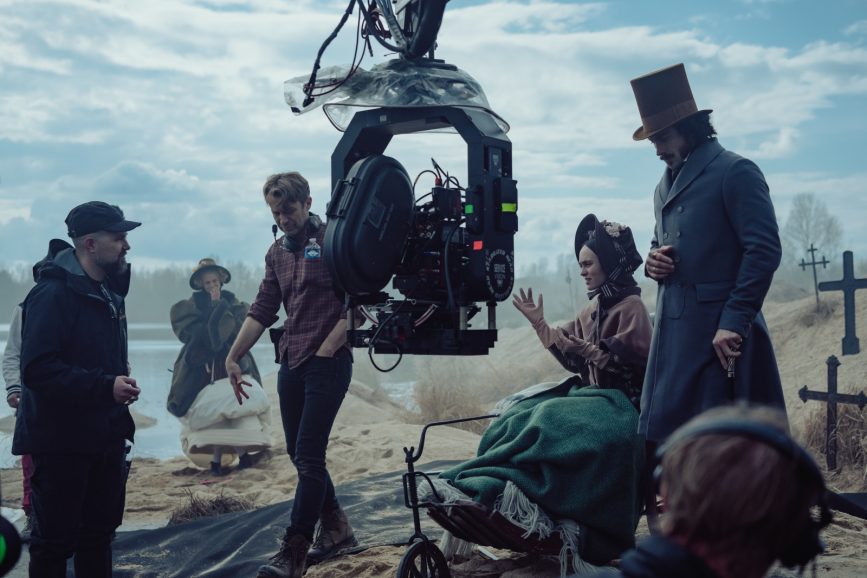
Lighting from life
For a film drenched in ominous shadows, the lighting scheme was always going to be crucial. “I’m happy with my lighting, but I think what comes most naturally to me is blocking or designing sequences in maybe unexpected ways,” says Blaschke. “I think that’s a more natural extension of my creativity and comes more easily to me. Again, I’m very happy with it, but my lighting is more based on real life. I can’t do a Conrad Hall or Robert Richardson or Kaminski because I just don’t think in those terms. My inspiration is going to be real life, like when I’m sitting next to a window, facing a certain direction and it’s winter at a certain time of day, I’m forensically recreating the real life experience that would be the most appropriate lighting for a scene.”
With so much soundstage work, Blaschke recalls taking advice from a gaffer he worked with on M. Night Shyamalan’s 2023 thriller Knock at the Cabin. “He said, ‘Well, what you should do is raise your sets so you put the lights below, as opposed to right out the window.’ That is the surest way to avoid light leaks on set. I thought maybe on the roof, which is not a bad idea, either. But the reason it’s better on the floor with a rostrum under the set – although that’s an expensive set build – is because sometimes I have mirrors out the window for faraway hard light sources that also shine over the set. Each hard source can’t have any other lights near it’s trajectory or you get multiple shadows. Because all those lights are sheltered by the floor, of course, but also because I have mixed light scenes, right? Even a sunny morning or a crisp moonlit night is still a mix of hard light working together with soft skylight.”
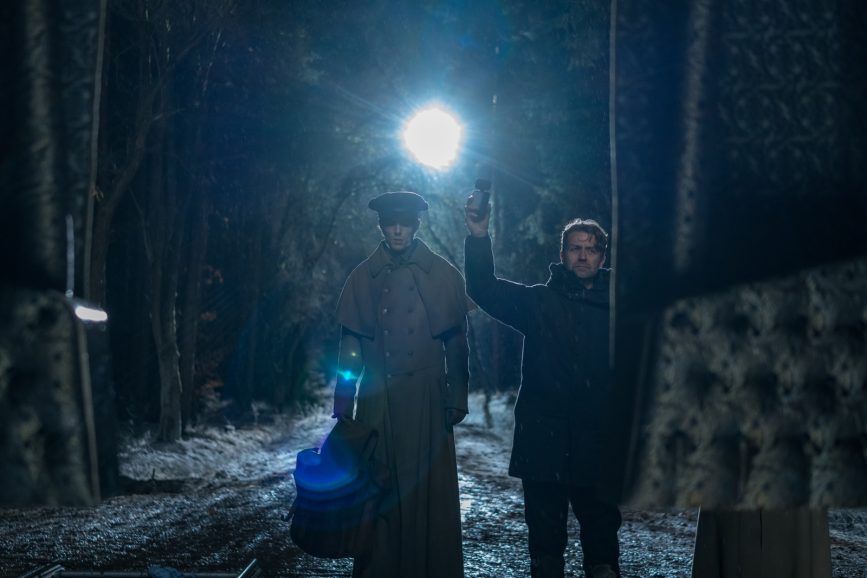
Sometimes, it took real innovation to achieve the desired effects. Take the scene in the crypt where Orlok is about to be vanquished as the sun’s going down. “[The sun] is stationary for the first three quarters of the scene. But I wanted to see the shadows move on the back wall…and really, you’re probably in the scene too much to really notice that. But I wanted this warm light to go away. It’s not just that it fades away, right? You want these moving shadows.” The elegant solution was to attach a motor to a mirror, which rotates as it descends as the sun sets. “I’m basically recreating out the window what would be there in real life, the horizon and everything.”
Blaschke was also keen to illuminate scenes using real candlelight, which was as beautiful as it was problematic. He recalls one scene populated by nuns. “All these candles dripping wax on these women! You’re setting up with all these candles, and they’re triple wick, that means they burn three times as fast, and it’s a mess, and eventually it’s on the floor, pooling around, and you’ve got to scrape it off. It’s tedious, and it’s never constant. You’re always trying to keep up with yourself, so you’re forced to work quickly, because if you wait around too much, then you have pools of wax instead of a light source.” For such a nocturnal film, moonlight and firelight were also key. “I figured out the ratios that look right to me from The Northman,” he adds. “I think this movie is a little higher contrast, a little less step away from the literal.”
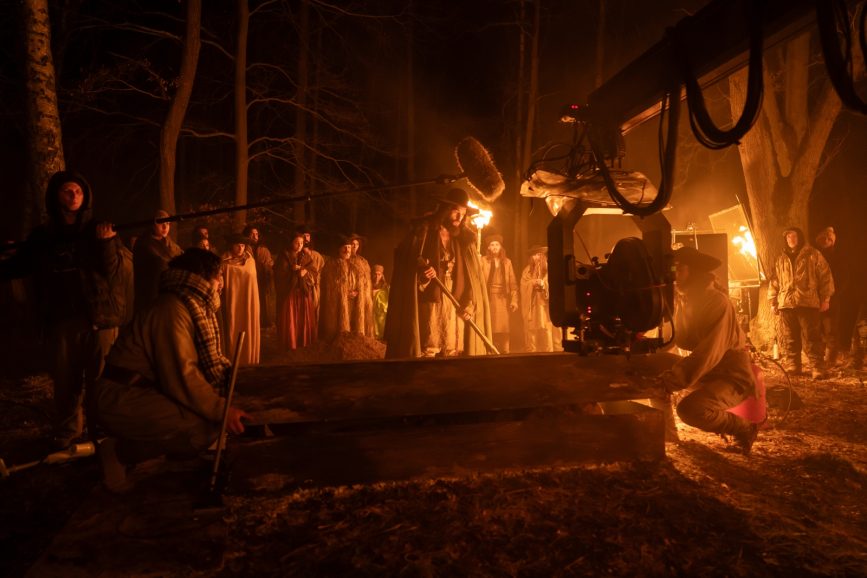
When the film moved into post, Blaschke reunited with colourist Adam Glasman, who previously worked on The Northman. “I think he felt more inspired this time around. I think now he knows the deal,” says the cinematographer. “Like a photographer, I do dodge and burn in the grade. Although, I never use it to lighten an unlit area or tame a highlight. That’s self-defeating and you need consistency in your intention throughout the whole photographic process. I use windows to extend and polish the lighting, not fix it. It’s the last 5% to draw the eye. I lighten in a light area, and darken the darkest areas to strengthen what is happening already. I’m still a purist…I’m doing it like an F64 photographer would. They would when burning and dodging their prints. As Ansel Adams famously said, your negative is the musical score and your print is the performance.”
With Nosferatu now garnering universal praise and potential awards recognition, Blaschke admits that he feels the film really is the culmination of everything he’s learnt across his career. “I try to say that without pride, because there are plenty of flaws in it,” he says. Now he needs to choose his next project, carefully. “To arrive at something I’ve been after for a long time is kind of terrifying, exciting and existentially dreadful. I don’t know what the next new thing is yet, the thing to move me forward. I need something new that is elusive and difficult to accomplish, in order to bring purpose to the work.”
